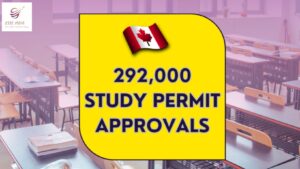
A laptop programmer prepares to work in Canada with the possibility of relocation
Introduction
Canada has long been a sought-after destination for international students and temporary foreign workers, owing to its world-class education institutions and diverse economic opportunities. The Immigration, Refugees, and Citizenship Canada (IRCC) plays a crucial role in facilitating the entry and stay of these individuals. In a recent development, the IRCC is set to introduce new automated tools aimed at expediting the processing of Post-Graduation Work Permits (PGWPs) and work permit extensions. This move signifies a significant step forward in making the immigration process more efficient and user-friendly.
Post-Graduation Work Permits (PGWPs)
The Post-Graduation Work Permit Program allows international students who have completed their studies in Canada to obtain an open work permit, enabling them to gain valuable Canadian work experience. This program has been a key driver in attracting international students to Canada and retaining talent in the country. However, the processing of PGWPs has often been criticized for its complexity and length.
The New Automated Tools
The IRCC’s new automated tools are expected to streamline the PGWP and work permit extension application process. Here are some key features and benefits of these tools:
User-Friendly Interface: The tools are designed to be user-friendly, making it easier for applicants to complete and submit their applications online. This reduces the likelihood of errors and delays.
Automated Eligibility Checks: The tools will include automated eligibility checks, ensuring that applicants meet the necessary criteria before they submit their applications. This helps prevent applications from being rejected due to eligibility issues.
Real-Time Updates: Applicants will have access to real-time updates on the status of their applications. This transparency allows individuals to track the progress of their applications and plan their futures accordingly.
Reduced Processing Times: One of the primary goals of these automated tools is to reduce processing times significantly. This means that international students and temporary workers can receive their PGWPs and work permit extensions faster, allowing them to start working sooner.
Efficient Document Submission: The tools will facilitate the submission of required documents, making it easier for applicants to provide the necessary information to support their applications.
Impact on International Students and Temporary Workers
The introduction of these automated tools is expected to have a positive impact on the experience of international students and temporary foreign workers in Canada. Faster processing times and a more streamlined application process will reduce uncertainty and allow individuals to plan their careers and futures with greater confidence.
Additionally, these tools align with Canada’s goal of attracting and retaining international talent. By making the process more efficient and user-friendly, Canada can continue to position itself as a top destination for education and work opportunities.
Conclusion
The IRCC’s decision to introduce new automated tools for the processing of PGWPs and work permit extensions represents a significant advancement in Canada’s immigration system. It reflects the government’s commitment to enhancing the immigration experience for international students and temporary workers, ultimately contributing to Canada’s economic growth and cultural diversity.
As these tools are implemented, stakeholders in Canada’s education and labor sectors can look forward to a more streamlined and efficient process for international students and temporary workers, reaffirming Canada’s position as a global leader in immigration policies and practices.





